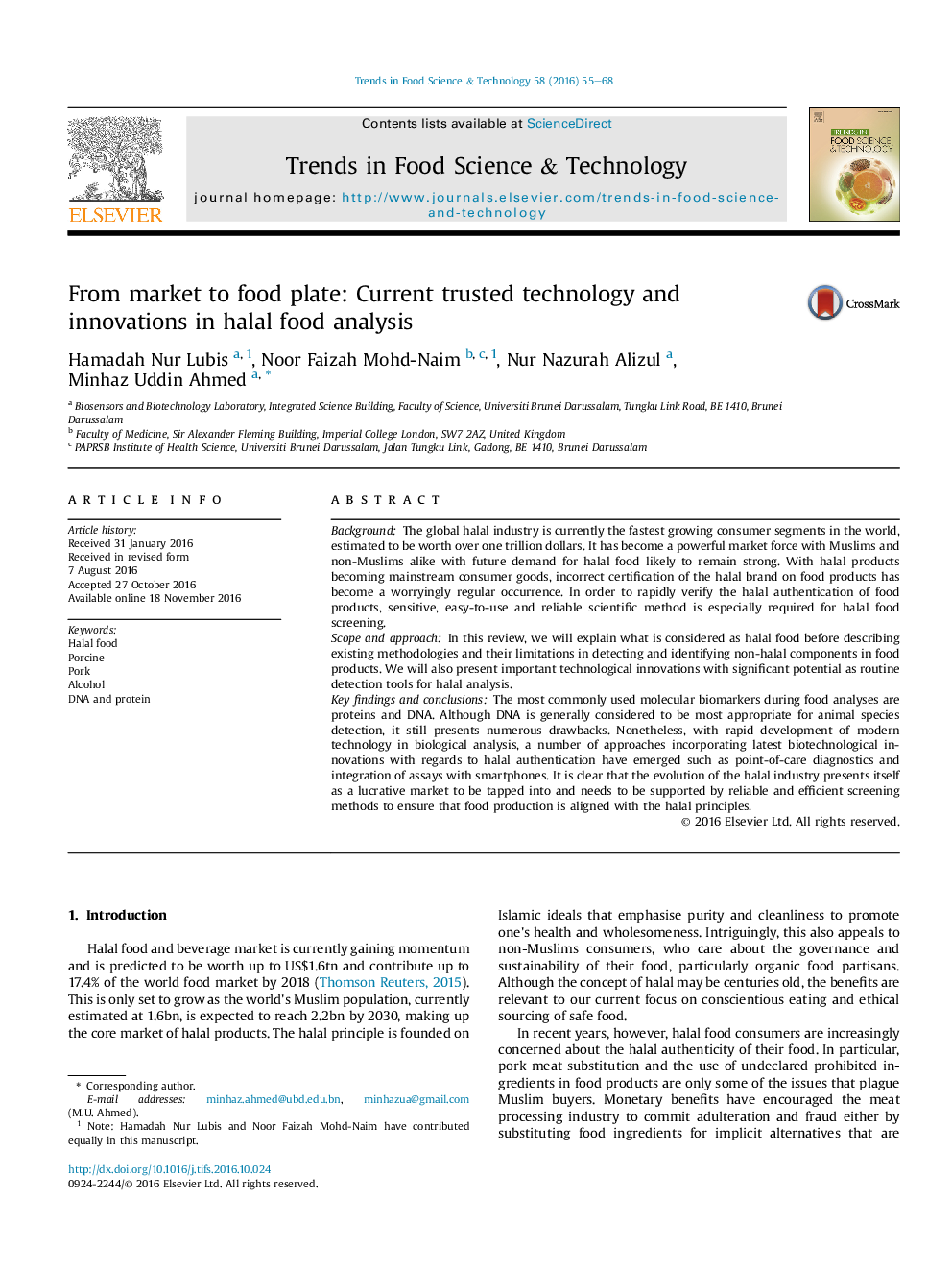| کد مقاله | کد نشریه | سال انتشار | مقاله انگلیسی | نسخه تمام متن |
|---|---|---|---|---|
| 5523808 | 1546121 | 2016 | 14 صفحه PDF | دانلود رایگان |
- Sensitive, simple and reliable diagnostic tools required for halal food screening.
- Proteins and DNA are most commonly used molecular biomarkers in food analysis.
- Cost-effective, rapid and portable detector is desirable for halal analysis.
- Approaches incorporating latest innovations show promise in halal authentication.
BackgroundThe global halal industry is currently the fastest growing consumer segments in the world, estimated to be worth over one trillion dollars. It has become a powerful market force with Muslims and non-Muslims alike with future demand for halal food likely to remain strong. With halal products becoming mainstream consumer goods, incorrect certification of the halal brand on food products has become a worryingly regular occurrence. In order to rapidly verify the halal authentication of food products, sensitive, easy-to-use and reliable scientific method is especially required for halal food screening.Scope and approachIn this review, we will explain what is considered as halal food before describing existing methodologies and their limitations in detecting and identifying non-halal components in food products. We will also present important technological innovations with significant potential as routine detection tools for halal analysis.Key findings and conclusionsThe most commonly used molecular biomarkers during food analyses are proteins and DNA. Although DNA is generally considered to be most appropriate for animal species detection, it still presents numerous drawbacks. Nonetheless, with rapid development of modern technology in biological analysis, a number of approaches incorporating latest biotechnological innovations with regards to halal authentication have emerged such as point-of-care diagnostics and integration of assays with smartphones. It is clear that the evolution of the halal industry presents itself as a lucrative market to be tapped into and needs to be supported by reliable and efficient screening methods to ensure that food production is aligned with the halal principles.
Journal: Trends in Food Science & Technology - Volume 58, December 2016, Pages 55-68
